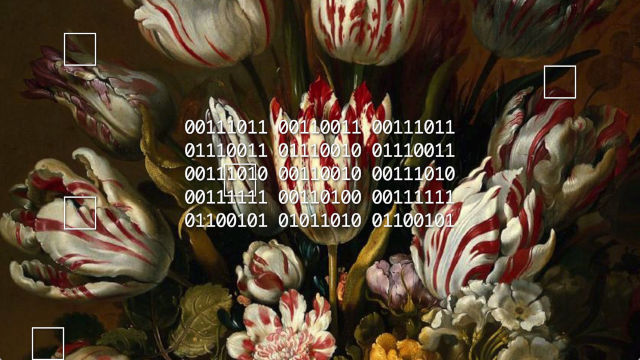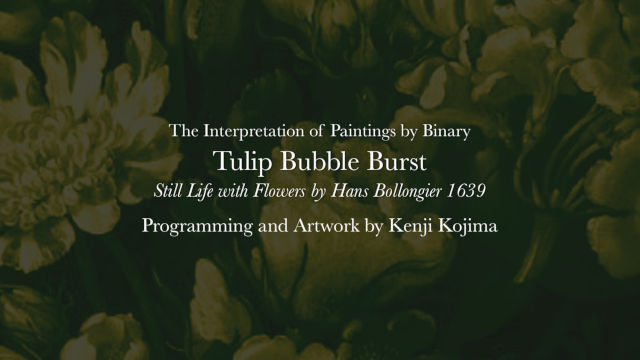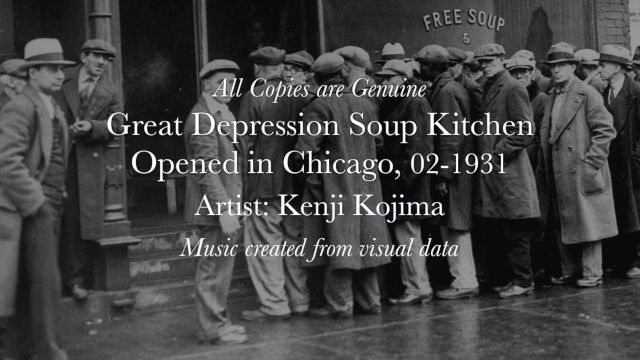I'm uncomfortable with NFT Art.
In Art We Trust
One Dollar
All Copies are Genuine
Created Music from Visual Data of One Dollar Bill Drawing
Artist: Kenji Kojima, 2022
Click and Open Video in New Window

Genuine One-Dollar Drawing Video
Download a Copy (1920 x 1080, 3:30)
One-Dollar-Drawing_1080.mp4, 162.9MB
I'm uncomfortable with NFT Art
Tulip Bubble Burst
Artist: Kenji Kojima, 2022


Click and Open Video in New Window
Genuine Tulip Bubble Burst Video
Download a Copy (1920 x 1080, 2:30)
TulipBubbleBrust_1080.mp4, 115.4MB
I'm uncomfortable with NFT Art.
Great Depression Soup Kitchen Opened in Chicago, 02-1931
Artist: Kenji Kojima, 2022


Click and Open Video in New Window
Great Depression Soup Kitchen Opened in Chicago Video
Download a Copy (1920 x 1080, 2:20)
DepressionSoupKitchen-3_1080.mp4, 108MB
|
Show: Japanese / 日本語
Hide: Japanese / 日本語
NFTアートに不快感を感じています。人間の経済活動は、地球のシステムに取り返しのつかない影響を与えてきました。このプロジェクトは、美術界の異常な金銭的価値を個々の美術愛好家に取り戻すプロジェクトです。さらに地球環境と現代文明を救う行動です。これは21世紀に向けた喫緊の課題です。 デジタル・アーティストはコンセプトに賛同してし、自身のベスト・ワークを少なくとも1つ公開することを提案します。アートの新たな意識は、新たな人間の価値を生み出します。 デジタル・アートの最も良い点は、何度でも完璧にコピーできることです。 130 億枚の 1 ドル紙幣が発行されて、今世界に残っているのは 1 枚だけと想像してください。 紙幣にアートの価値があるなら、なくなった紙幣も全てアートです。 NFTアートはマネーゲームのツールです。 私はブロックチェーンの技術を否定しているわけではありません。 しかし、NFTアートをアートとは言えません。NFTアートはアートではなく金融商品です。それはアートの価値ではありません。それは資本主義という宗教の貪欲な象徴です。 非常に短期間に、人間の経済活動は地球のシステムに取り返しのつかない影響を与えてきました。 貪欲な資本主義は環境だけでなく地球文明も破壊します。 NFTアートの不快感を終わらせる時と判断しました。私はアートとして視覚と聴覚の関係に興味があります。映像データを音楽に変換するプログラミングで、実験的なビデオを数多く制作してきました。このプロジェクトは、アルゴリズムで画像の視覚データから音楽を作成します。ビジュアル「1ドル札」は、アーティストの小島健治のドローイングです。その他の画像は、ネット上にあったパブリック・ドメインです。アートワークをコピーしたビデオは無料で配布されています。あなたがダウンロードしたビデオをアートとして認めた場合、アーティストに寄付することができます。アートでないと思った人でも、そのコピーを持つことができます。しかし、あなたが判断したように、それにはアートの価値はありません。 Hide: Japanese / 日本語 I'm uncomfortable with NFT Art. Human economic activity has had an irreversible impact on the Earth's systems. This project is to bring back the absurd monetary value of the art world to individual art lovers. It is also an action to save the global environment and modern civilization. This is an urgent issue for the 21st century. Digital artists agree and propose to publish at least one of their best works. The new consciousness of art creates new human value. The best thing about digital art is that you can copy it perfectly repeatedly. Imagine that 13 billion authentic one-dollar bills are issued, but only one is left in the world. If the banknote has artistic value, then the missing banknotes were art. NFT Art is a monetary tool in the game of capitalism. It has the same art value as other copies. I do not deny blockchain technologies. But NFT Art is not suitable for art. NFT Art is a financial product in the game of money. You can say that it is a greedy symbol of the religion of capitalism. In a very short period of time, human economic activity has had an irreversible impact on the Earth's systems. The art concept of greedy capitalism destroys the environment and global civilization. I decided it was time to deny this discomfort with NFT Art. I am interested in the connection between various human senses and art. Especially the relationship between sight and hearing. I have created many experimental videos with programming that converts visual data into music. In this video, I use an algorithm to generate music from the visual data of images. The visual "One Dollar Bill" is a drawing by the artist Kenji Kojima. Other images are public domain and can be found on the net. The artwork video can be shared for free. You can donate to the artist if you approve of the copied video as art. Even people who disapprove of art can have a copy. But it has no artistic value as they decided. Show: Kenji Kojima's Biography
Hide: Kenji Kojima's Biography
Kenji Kojima is a digital artist. Since the early 1990s, he has been experimenting with the relationships between perception and cognition, technology, music, and visual art. He is particularly interested in the relationship between seeing and hearing. Born in Japan and moved to New York in 1980. He spent his first 10 years in New York City painting in egg tempera. His paintings were collected by Citibank, Hess Oil and others. The personal computer improved rapidly in the 1980s. He felt more comfortable with computer art than painting. He switched his artwork to digital in the early 1990s. His early digital works were archived in the New Museum - Rhizome, New York. He developed his own computer programs for his artworks and created an interdisciplinary work exploring the relationship between images and music. His digital art series was exhibited in New York, at media art festivals worldwide, including Europe, Brazil, the Middle East, and Asia, and at the online exhibitions by ACM SIGGRAPH and FILE, etc. LiveCode programmer. https://kenjikojima.com/ Hide: Kenji Kojima's Biography |
